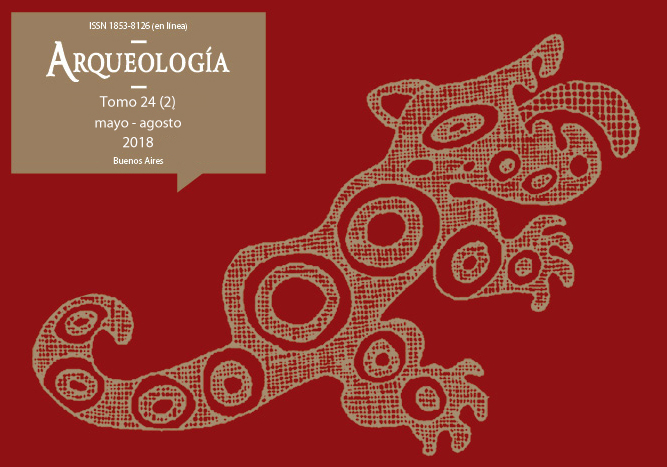Taphonomy of surface archaeological assemblages: the case of P 37 (Santa Cruz River mouth), Southern Patagonia
Keywords:
Taphonomy, Bone weathering, Aeolian abrasion, Coastal archaeological record, Patagonia
Abstract
In this article, we analyze the P 37 archaeological deposit from a taphonomic perspective. The site is located at the mouth of the Santa Cruz River in Southern Patagonia. This paper discusses the dynamic consequences of the exposure/burial of surface archaeological materials. In so doing, we consider both organic and inorganic remains, given that both elements offer different kinds of environmental, behavioral and taphonomic evidence. Based on the analysis of surface and stratigraphic bone and lithic materials, the data reveals a depositional taphonomic history that includes periods of greater and lesser stability linked to exposure and burial events. Hence, it can be argued that the deposit was a dynamic structure. In this sense, alteration of the assemblage was not unidirectional, with loss of information being the end result of solely the highly eroded environment in which the site was located. In conclusion, the use of independent, yet complementary, lines of evidence was a useful tool in discussing the taphonomic nature and history of coastal archaeological deposits affected by alternating cycles of exposure and burial.Downloads
Download data is not yet available.
How to Cite
Cañete Mastrángelo, D. S., & Muñoz, A. S. (1). Taphonomy of surface archaeological assemblages: the case of P 37 (Santa Cruz River mouth), Southern Patagonia. Arqueología, 24(2), 161-176. https://doi.org/10.34096/arqueologia.t24.n2.5005
Section
Articles
Authors who publish in this journal agree to the following conditions:
- Authors retain copyright and yield to the journal right of first publication with the work registered with attribution license Creative Commons, which allows third parties to use the published always mentioning the authorship of the work and first publication in this magazine.
- Authors can make other independent and additional contractual arrangements for the non-exclusive distribution of the version of the article published in this issue (p. Eg., Inclusion in an institutional repository or publish it in a book), provided that clearly indicate that the work was published for the first time in this magazine.
- It allows and encourages the author / s to publish their work online (eg institutional or personal pages) before and during the process of revision and publication, as it can lead to productive exchanges and greater and more rapid dissemination of work published (See The Effect of Open Access).





(1)13.png)






1.jpg)
1.jpg)


13.png)
1.png)


(1)1.png)









